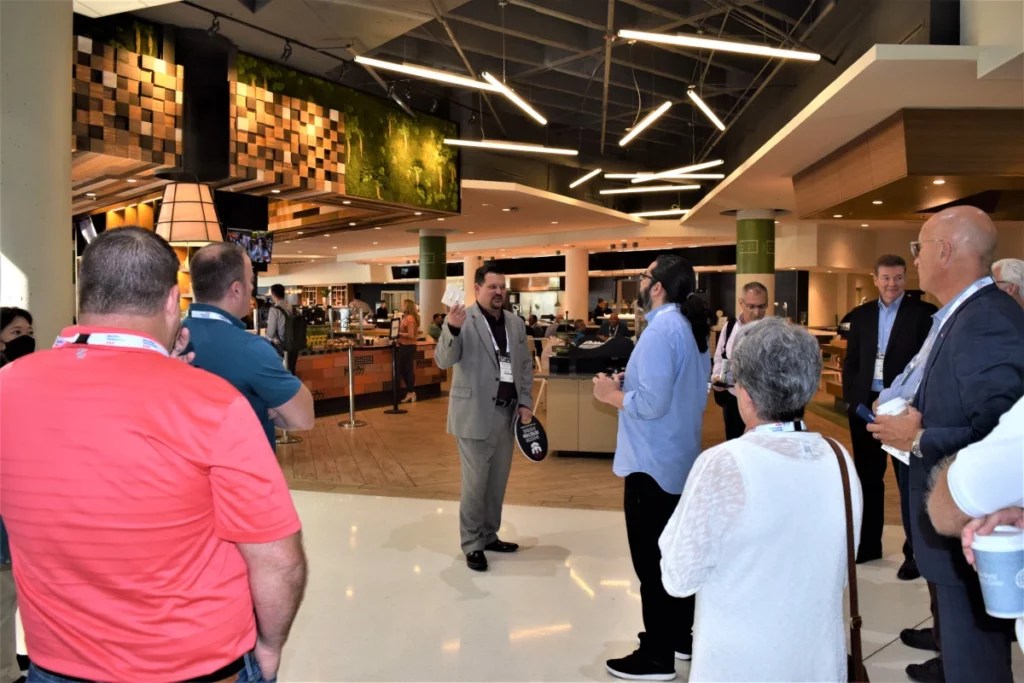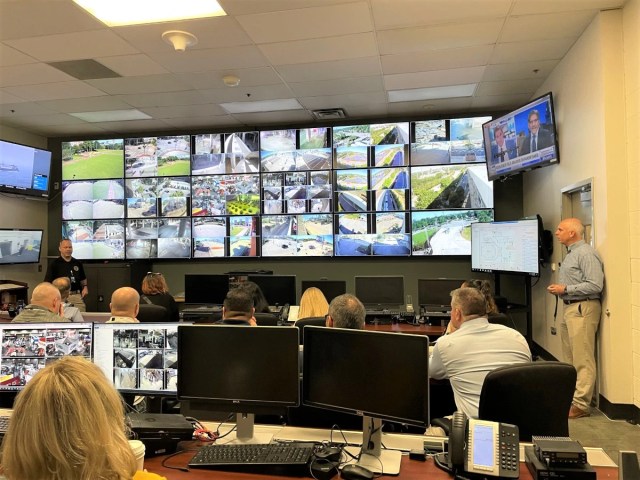Security Leaders Explore Gunshot Detection
Behind the Scenes at SDS client Georgia World Congress Center
How would you best protect guests at North America’s third largest exposition center during an active shooter attack? This question was explored by over 250 Global Security Exchange participants who had the opportunity to go “behind the scenes” with the security team of the Georgia World Congress Center and get a first-hand look at their approach to addressing gun violence in public spaces – the highlight of which is their use of an indoor gunshot detection system.
Each year ASIS International’s flagship security conference event, the Global Security Exchange or GSX, hosts security experts from around the world. As an event that is purpose built for examining and discussing today’s security issues and recommended practices, the opportunity to see first-hand the security assets of the conference’s host – the Georgia World Congress Center, or GWCC – was one not to be missed. The GWCC is a multi-level facility covering over 3.9 million square feet and hosts over a million visitors each year. As one of the very few convention center complexes that has its own police force, the Public Safety team has access to significant security resources and works closely with both state and federal law enforcement agencies to monitor and respond to a wide range of threats.
During the GSX conference, Marc Vincent, Emergency Preparedness Manager at the GWCC, opened the doors of the GWCC’s Emergency Operations Center to interested security leaders from across the globe. The focus of the presentation and onsite tour was the GWCC’s use of indoor gunshot detection technology to mitigate the impact of active shooter events. The GWCC uses Shooter Detection Systems’ Guardian Indoor Active Shooter Detection System to detect, verify and track firearm discharges in key areas of the complex. This technology is then integrated into the GWCC’s Avigilon video management system to provide the security team with instant visual identification and tracking of an assailant.
When a workplace or public shooting event occurs, confusion, misinformation and the overall speed of the crisis hamper the ability of law enforcement to provide immediate and effective support. During the presentation, Mr. Vincent and the GWCC’s IT Director Thomas Lloyd gave a demonstration on the functionality of the gunshot detection system and talked about how their integration with video and access control could save lives by instantly providing critical information to first responders.
During the time of the Covid-19 shutdowns, the GWCC was forced to suspend operations for eighteen months. To keep his team engaged, Mr. Vincent ran several live fire exercises to fully test both the effectiveness of the technology and internal procedures. Even in situations with simultaneous, multiple weapons discharges in high volume locations, the GWCC’s platform was able to immediately detect weapons fire and transmit location data to multiple law enforcement resources via text, email, and video

In addition to access to the GWCC’s Emergency Operations Center, participants were given a walking tour of sections of the GWCC monitored by the indoor gunshot detection system. It’s a common misconception that a facility or office needs to have gunfire location sensors in every room or hallway. Mr. Vincent, with the help of representatives from Shooter Detection Systems, demonstrated that the sensors only needed to be placed in selected areas – typically at building access points or gathering areas. The GWCC is located on the same campus as the Mercedes-Benz Stadium and its facility is often accessed by the public during NFL games. Placing gunshot detection sensors in entrance ways or near concession stands make sense as the population of convention attendees and the general public can shift rapidly at any time and become a potential problem zone for the Public Security team.
With the FBI reporting a 52.5% increase in active shooter events just from 2020 to 2021, security professionals are now recognizing that they need to incorporate active shooter mitigation solutions into their organization’s security environment. According to Mr. Vincent, this is one reason why he began rolling out an active shooter preparedness plan when he first assumed his role at the GWCC Authority. To complicate matters further, 2022 is also quickly shaping up to be the year of false active shooter reports, especially in the educational space. One of the topics discussed during the tour was the importance of the GWCC’s gunshot detection technology to verify that an actual firearm had been discharged and not create a false alert if a similar sounding noise is encountered. Mr. Vincent explained that one of the key reasons his team selected the Guardian solution over competitors was its use of true dual factor authentication to reduce the possibility of a false alert to almost zero when compared to other acoustic gunshot solutions.
Are you interested in learning more about the indoor gunshot detection solution at the GWCC or exploring another SDS customer use case? Please contact us via email or call us at 1-844-SHOT911

